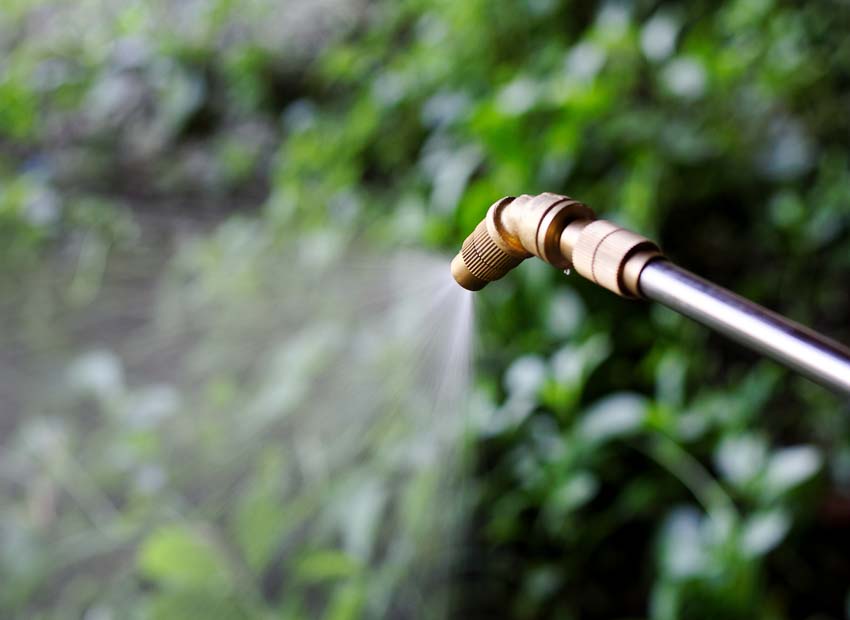Effective weed control requires a persistent, multifaceted approach, and pre-emergent herbicides play a significant role in successful weed control strategies. Discover when and how to apply pre-emergent herbicides as part of your ongoing lawn care plan.
How Pre-emergent Herbicides Work
It’s impossible to get rid of weeds in your yard completely. Weed seeds can lay dormant for years and survive almost anything thrown at them. At the first chance, they will germinate and seize the opportunity to take over your lawn.
Pre-emergents stop the seed’s growth after germinating so that weeds won’t establish in your yard. Learn more about the science behind pre-emergents and their benefits in your lawn and garden.
The Science Behind It
Pre-emergent herbicides contain the chemicals dithiopyr, isoxaben, and prodiamine to prevent weed seeds from growing after they germinate. Different chemicals inhibit the growth of various target weeds, so many pre-emergent herbicide products contain multiple chemicals to target a broad spectrum of weed types.
Pre-emergents disrupt cell division in monocot and dicot seedlings (one and two-leaf plant embryos). Once a seed germinates, the herbicide prevents it from developing roots. Pre-emergent herbicides work best when applied in the root zone, which is the top two to three inches of soil where most weed seeds germinate.
When you apply them properly, pre-emergents create a barrier between the soil and the surface. This prevents weeds from breaking through and becoming established.
Most pre-emergents are synthetic chemicals. However, there are also natural pre-emergents like corn gluten, which releases proteins into the soil that starve the roots of water.
Benefits for Your Garden
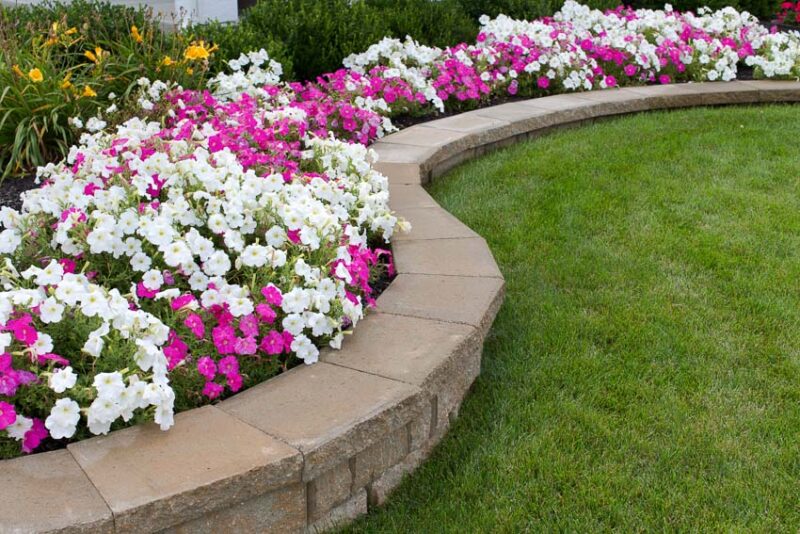
Pre-emergent herbicides are one of the best things you can do for your lawn and garden as part of your overall weed control strategy. By preventing weeds before they start, you protect your plants and enhance the aesthetics of your garden.
Once weeds become established, they are more difficult to remove, especially in vegetable gardens and flower beds. In your vegetable garden, weeds compete with plants for nutrients, so using a pre-emergent will increase crop yields.
Using pre-emergents will reduce the need for other, more labor-intensive methods, such as hand pulling and cultivation. When combined with post-emergent herbicides in your lawn, pre-emergent herbicides are part of an effective weed control strategy.
Kinds of Weeds Pre-emergent Herbicides Block
You can use pre-emergent herbicides to control many problematic weeds in your lawn and garden. Learn more about the types of weeds that pre-emergent herbicides effectively control.
Weeds Controlled by Pre-emergent Herbicides
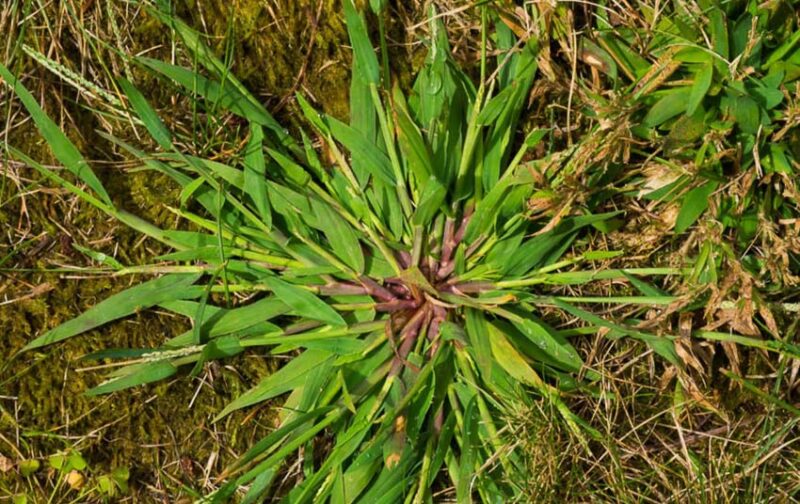
Crabgrass (Digitaria spp.): Perhaps the most notorious lawn weed, crabgrass is an annual that germinates when soil temperatures reach about 55°F.
Goosegrass (Eleusine indica): Similar to crabgrass in appearance but is typically more problematic in high-traffic areas.
Foxtails (Setaria spp.): A group of annual grassy weeds that produce bushy seed heads resembling a fox’s tail.
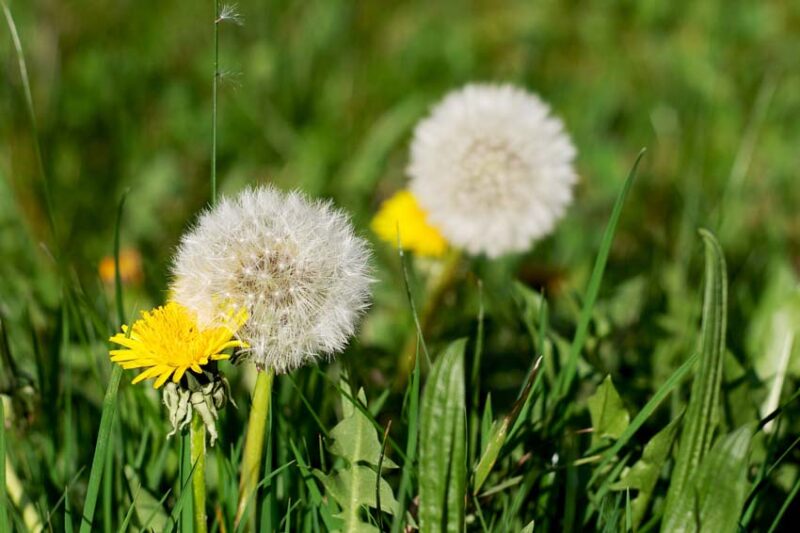
Dandelion (Taraxacum officinale): Though perennial, pre-emergents can be effective in preventing new germinations.
Spurge (Euphorbia spp.): A broadleaf annual with a milky sap that’s often found in drought-stressed lawns.
Henbit (Lamium amplexicaule): A cool-season annual weed that’s identifiable by its purple flowers.
Purslane (Portulaca oleracea): A heat-tolerant annual with thick, succulent leaves.
Yellow nutsedge (Cyperus esculentus): Not a true grass, this sedge can be persistent and tough to eradicate.
Barnyardgrass (Echinochloa crus-galli): A summer annual grass that prefers moist, rich soils.
Poannua, or Annual Bluegrass (Poa annua): A cool-season annual grass that can create a patchy appearance in lawns.
When to Apply Pre-emergent Herbicides
The most important consideration when applying pre-emergent herbicides is timing. Many common weed seeds start to germinate when the soil warms up in the spring, or when the soil temperatures cool down in the fall.
Learn when to apply pre-emergent herbicides by understanding the seasonal timing of spring and fall applications for different climates.
Seasonal Timing
Since pre-emergent herbicides are only effective when applied before weeds germinate, timing is critical. Applying them too early isn’t effective because they break down in the soil fairly quickly.
However, it’s better to apply pre-emergent herbicides too early than too late because they won’t be effective once weeds start to grow.
Spring Application of Pre-emergent Herbicides
Early spring is the best time to apply pre-emergent herbicides to control summer weeds. However, the best time for grassy weeds like crabgrass is late spring to early summer.
Fall Application of Pre-emergent Herbicides
Weeds are incredibly opportunistic. They remain dormant in the soil and wait for the conditions to be just right to germinate. You can easily prepare your lawn and garden for winter weeds like chickweed and henbit using the autumn application of pre-emergent herbicides.
Considerations for Different Climates
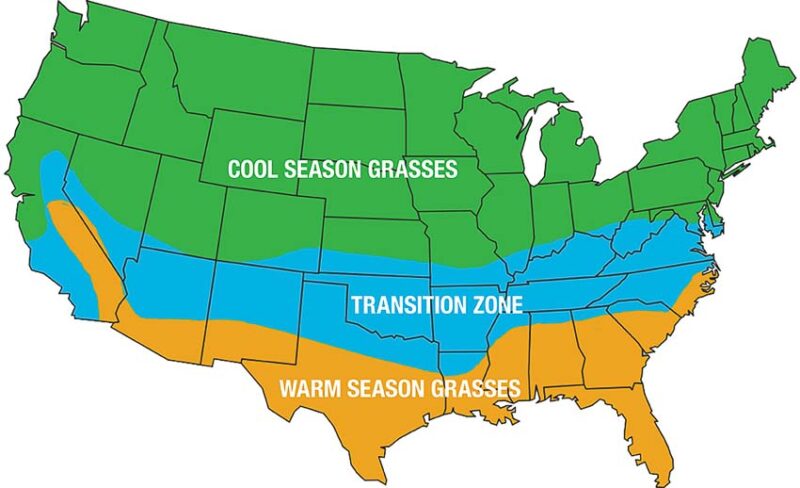
Soil temperatures vary from region to region, so it’s essential to consider your regional climate when timing the application of pre-emergents. Some people recommend applying pre-emergents when forsythia blooms start to fall or when redbud trees start blooming, but the best method is to use soil temperature as your guide.
Place a soil thermometer at least two inches deep into the soil to determine the soil temperature.
- The spring application of pre-emergent herbicides should occur when soil temperatures are 55°F (13°C) for at least two days in a row.
- Once soil temperatures drop to 70°F (21°C), you can apply pre-emergent herbicides in the fall to prevent weeds from establishing during the winter.
Types of Pre-emergent Herbicides and How to Use Them
Pre-emergent herbicides come in liquid and granular form. Both types create a barrier that prevents sprouted weed seeds from developing. Learn how to apply pre-emergent herbicides so that they work correctly.
Different Types of Pre-emergent Herbicides
Herbicides come in different forms, and they are also selective and non-selective. Selective herbicides target specific types of plants but don’t affect others, so make sure you’re using the right one for the weeds in your yard.
Herbicides also come in liquid and granular form. No matter which type you are using, you must evenly apply pre-emergent herbicides over the target area.
With post-emergent herbicides, spot applications are effective, but with pre-emergents, you’re trying to completely cover the entire area to prevent weeds from sprouting and becoming established.
Granular herbicides
It helps to think of pre-emergent herbicide application like a blanket. Whether it’s liquid or granular form, you need complete coverage of the target area.
With granular herbicides in this class, use a broadcast or drop spreader to apply it according to the manufacturer’s directions. You’ll find the application rate on the label, and you should follow them closely.
Once you determine how much product you need for your target area, work across the area, spreading the herbicide granules evenly.
Liquid herbicides
You should apply liquid herbicides with a sprayer; either a handheld pump sprayer, backpack sprayer, or a sprayer attachment for your riding lawn mower.
Mixing the herbicide at the recommended rate and applying it evenly over the target area is critical. Again, think of the blanket analogy when applying pre-emergent herbicides.
Application Tips
The following application and safety tips will ensure the best results:
- Follow label instructions carefully when mixing and handling herbicides.
- Wear protective clothing, including long sleeves, pants, boots, gloves, and goggles, to avoid skin and eye contact.
- Apply pre-emergents when your lawn is dry.
- Remember that timing is critical when applying pre-emergent herbicides.
- Applying pre-emergents is easier if you mow your lawn first, as it will help them soak into the soil.
- You should fertilize your lawn in the spring, but applying pre-emergents is a job that should be done on its own. For best results, apply pre-emergent herbicides before using fertilizer, which can go on your lawn about a week after the herbicide.
What to Do After Applying Herbicide
After you apply a pre-emergent herbicide, be sure to water it into the soil. Learn more about the best immediate aftercare and long-term maintenance practices for applying pre-emergents.
Immediate Aftercare
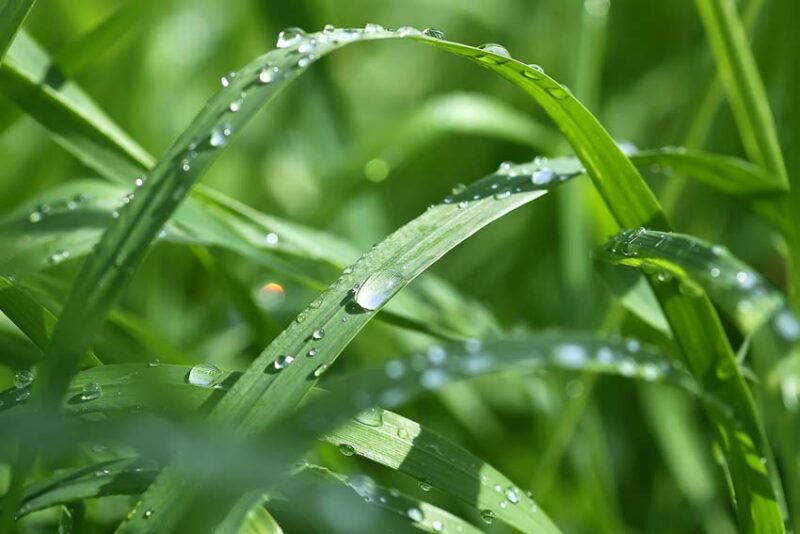
Do not apply pre-emergent herbicides on wet lawns. In saturated soil, chemicals won’t evenly distribute in the root zone.
Within a few days of pre-emergent application, water your lawn for 15 to 20 minutes to ensure it moves into the top layer of soil. You may need to water granular herbicides longer.
If your target area doesn’t receive irrigation, try to schedule it within 21 days of forecasted rain.
Long-term Maintenance
How long does pre-emergent last? Pre-emergents break down relatively quickly in the soil. So you have to apply them regularly as part of your overall long-term garden maintenance schedule.
You can usually expect pre-emergents to last 3 to 6 months.
The best plan is to use pre-emergents in the early spring and then again in the fall to control both summer and winter weeds. Skipping applications will result in weeds dominating your lawn by the end of the growing season.
Common Application Mistakes
Review the most common application mistakes to avoid problems when using pre-emergents.
Over-application
Whether due to uncalibrated spreaders or excessive overlap, over-applying pre-emergent herbicide chemicals to your lawn will stunt the root growth of your grass, delaying the spring greening of your lawn by several weeks.
You can easily avoid over-application by following the directions on the label and properly calibrating your spreader.
Suppose you make a mistake that results in over-application of pre-emergents. In that case, it can cause problems when reseeding or overseeding parts of your lawn.
You may be able to disturb the soil by aerating or dethatching your lawn to combat this problem.
Incorrect Timing
Untimely application is another common mistake when applying pre-emergents. You have to get the timing just right. Timing depends on the season, the type of weed you’re targeting, and the soil temperatures.
If weed seeds germinate and become established before you apply pre-emergents, they won’t be effective. If you apply the pre-emergent too soon, it will break down before seeds start to sprout and won’t be as effective.
Activity on Lawns
Going back to the blanket analogy, it’s easy to see why activity on lawns results in failed applications of pre-emergents. To be effective, the pre-emergent has to remain intact over the top layer of soil, which is the zone where weed seeds germinate.
Next Steps
After applying pre-emergent herbicides, what’s next? You can expect to see fewer weeds popping up on your lawn. Take notes and see what works so that you can replicate it next year.
Observing the Results
Lawn care isn’t rocket science, but it does require a lot of planning and hard work. Take copious notes when you make significant changes to your lawn care routine. Observe the results and document them over the course of the next few months to see what happens.
Adjustments for Future Applications
By taking notes and documenting the results, it’s easier to make adjustments in future applications. You may even be able to apply a different product or combination of products to get better results in the seasons ahead.
Post-emergent Herbicides
Post-emergents are another type of herbicide that plays an essential role in your overall weed control strategy. Learn when to use them and how to combine pre- and post-emergent herbicides in your lawn care plan.
When to Use Post-emergent Herbicides
Once the growing season is underway, you’ll probably have some weeds that germinated before you applied the pre-emergents.
You can use post-emergents on established weeds. Post-emergents work when plants absorb them into their vascular systems, ultimately leading to the roots.
Combining Pre-emergent and Post-emergent Herbicides
As part of developing a comprehensive and effective weed control strategy, you can apply pre-emergents in early spring when temperatures reach 55°F (13°C). Then, wait about two weeks for temperatures to reach 55 to 85°F (13 to 30°C) to apply a post-emergent herbicide.
After that, you can use a late application of pre-emergents to get rid of weeds like crabgrass.
Frequently Asked Questions (FAQs) About Pre-emergent Herbicides
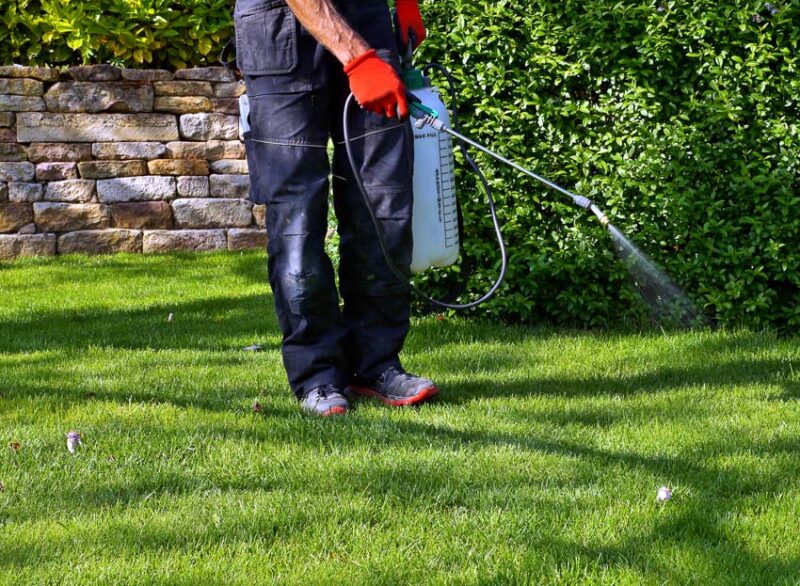
Can I use pre-emergent herbicides in my vegetable garden?
Using pre-emergents in your vegetable garden can prevent your vegetable seeds from germinating and developing. The best pre-emergent for vegetable gardens is corn gluten.
It’s a natural, organic product that prevents the development of seedling roots, so it’s best to use it around established plants.
How soon can I plant after applying a pre-emergent herbicide?
Timing the planting of seeds and the application of pre-emergent herbicides can be tricky. If you already planted your lawn, wait six weeks before applying pre-emergents. Once you apply pre-emergents, you must wait at least three months before planting.
Are pre-emergent herbicides safe for pets and children?
Unlike other types of herbicides, the chemicals used in pre-emergents are considered safe for humans and pets. However, it’s important to always follow the instructions for safe application of chemicals.
Can I use pre-emergent and post-emergent herbicides together?
You can apply pre-emergent and post-emergent herbicides on the same day, but they may require different application methods. Always refer to the instructions on the label.
How do I choose the right pre-emergent herbicide for my garden?
When choosing the right pre-emergent herbicide for your garden, you must consider several factors, including the type of weeds you have, the time of year, and the size of the area.

